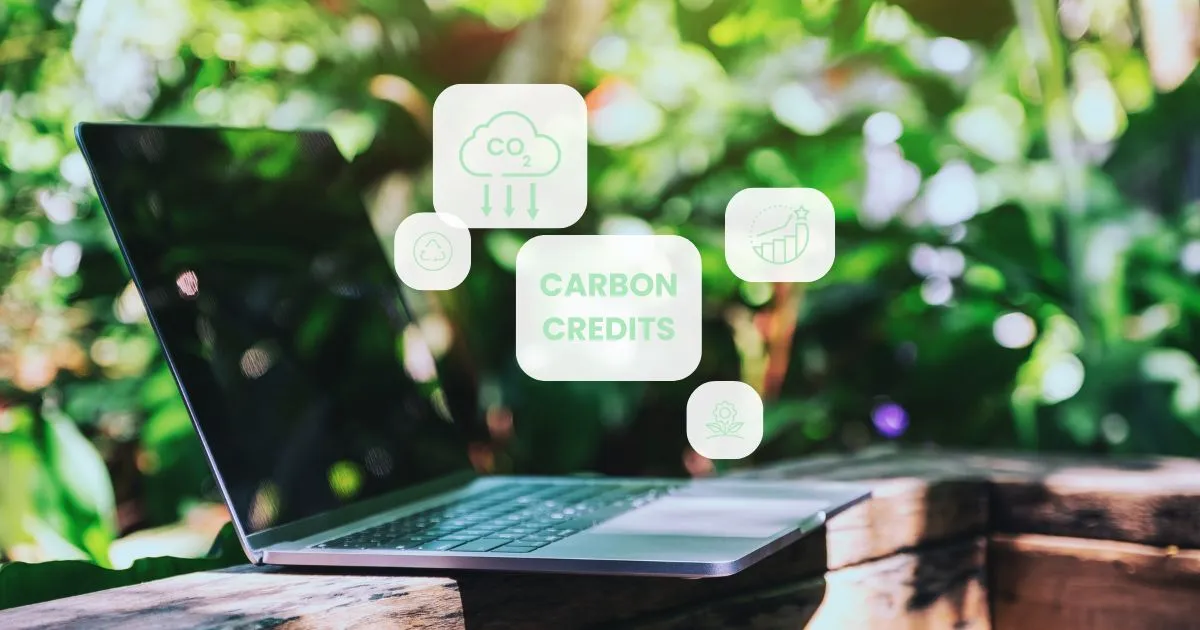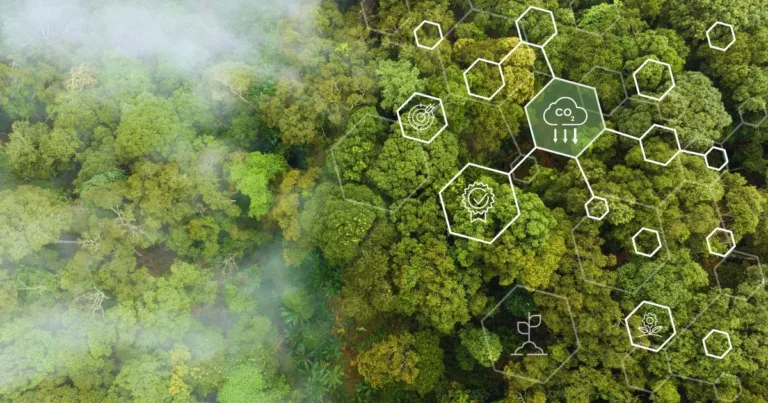
Setting the bar high: the demands of investment-grade carbon credits
In the evolving landscape of investing in sustainability, a significant spotlight has been placed on investment-grade carbon credits. These high-quality credits are not just desirable; they are essential for major players such as institutional investors, sovereigns, and large corporations. These heavyweights aren’t just looking for any carbon credits; they seek the gold standard, the crème de la crème of credits. Credits that can be trusted and have tangible environmental and social outcomes.
These organisations won’t work with just anybody and have become more cautious in recent years, and for a good reason. They seek counterparties who also possess an investment-grade rating – reliable partners to minimise risk before engaging in investments.
Project developers need to be at the top of their game – taking full accountability is not a suggestion but a necessity
What does this mean in practice for project developers selling their credits to these buyers? To attract and maintain good relationships with the investment-grade credit buyers, developers must excel in multiple critical areas.
First off, governance isn’t just a fancy word; it’s the backbone of trust. Developers must ensure that all activities comply with best practices, relevant laws, and underlying standards. Staying up to date with policies and adjusting operations accordingly shows a commitment to quality and compliance that is reassuring to buyers and quite frankly should be expected of them.
Through strong and effective governance, clear structures and transparent processes, developers can instil confidence in buyers that all the activities comply with best practices, relevant laws and underlying standards. Staying up to date with all relevant policies and adjusting operations accordingly, developers demonstrate a commitment to quality and compliance. When robust processes are in place, operations become more efficient, reliable and capable of meeting the high standards expected of top-tier investments.
Due diligence plays a critical role. Often spoken about in the industry, due diligence is ensuring thorough assessments are conducted to make every aspect of a project rock-solid. This process includes identifying potential risks, ensuring compliance with regulations, and verifying the feasibility of the project in every possible aspect. For example, this involves assessing feasibility in terms of the appropriate carbon method, economic aspects, the policy environment, as well as potential incentives or barriers to the cross-border trade of carbon credits.
Alongside this, the magic of clear and open communication cannot be overstated. Even if it can be difficult to admit issues, transparency with clients about project details, progress, and any issues that may arise or have arisen is essential. Taking full accountability, both internally and externally, is a must. Developers should willingly take responsibility for their actions, provide detailed reporting, and be open to scrutiny from investors and regulatory bodies.

Who determines what investment grade is and what’s not?
“Investment-grade” refers to the entities and standards that assess and certify whether an investment is of high-quality, reliable and likely to provide stable returns with minimal risk.
In the context of investment-grade carbon credits, the evaluation process is carried out by multiple entities and standards. A few examples include:
- Governments: For example, in Australia, the Australian Carbon Credit Unit Scheme sets national standards
- Supranational bodies: Organisations like the European Union (EU) and the United Nations (UN) establish internationally recognised criteria for investment-grade status, for example in terms of the ongoing negotiations surrounding Article 6 of the Paris Agreement. This article is extremely important for establishing a commonly accepted global carbon standard, and for defining the rules around cross-border transactions of carbon credits and other environmental attribute certificates (EACs).
- Regional jurisdictions: Entities such as the Western Climate Initiative (WCI) in California provide localised standards tailored to regional environmental and economic conditions.
- Specialised organisations in the voluntary carbon market: A multitude of organisations, each with their own acronyms, establish specific guidelines to ensure the quality and reliability of carbon credits in the voluntary market. These include the Core Carbon Principles (CCP) of the Integrity Council for the Voluntary Carbon Market (ICVCM), Voluntary Carbon Markets Integrity (VCMI), Science Based Targets initiative (SBTi), CORSIA (Carbon Offsetting and Reduction Scheme for International Aviation – an industry-wide initiative by the International Civil Aviation Organization (ICAO)) compliance, International Carbon Reduction and Offset Alliance (ICROA) accreditation, and the Carbon Market Institute (CMI) in Australia, dedicated to support the carbon market and promoting best practices within the industry.
- Carbon rating agencies: BeZero, Calyx Global, Renoster and Sylvera provide independent assessments of carbon projects and the credit values.provide independent assessments of carbon projects and the credit values.
- A range of insurance products: A variety of insurance products are available to mitigate investment risks, including those by KITA and OKA, and the World Bank’s Multilateral Investment Guarantee Agency (MIGA), which insures against sovereign risk.
Given that some entities have faced criticism for inaccuracies or inconsistencies, investors should diversify their approach and not rely solely on a single source of assessment.
Moreover, the market for insurance products related to carbon credits is emerging, offering warranty and indemnity insurance for issued credits, see Howden for example. These insurance products function similarly to those in the merger and acquisition space, providing guarantees that the carbon credits being purchased are free from issues. This additional layer of protection can enhance investor confidence and ensure that their investments are secure. As this market develops, it is likely to become an integral part of the carbon credit investment landscape, offering investors peace of mind and reducing the risks associated with potential discrepancies in carbon credit validity.
Role of governments in driving transformational change
While voluntary carbon markets play a crucial role in addressing climate change, they’re not sufficient on their own to drive large-scale, systematic changes. In 2021, while the voluntary carbon market grew at a record space, being four times its value in 2020, it reached $2 billion. Since then, the market size has decreased, with 2023 seeing the voluntary carbon market generating just $723M in revenues.
This volatility indicates the tenuous nature of this market. Even with significant expansion plans and expectations for continued growth, the voluntary carbon market remains relatively small compared to other financial markets. By comparison, compliance carbon markets covering roughly 23% of global emissions generated over $949 billion in revenues in 2023.
Governments need to be more involved by implementing policies and regulations that can drive the large-scale adoption of carbon reduction strategies. This includes, for example, implementing carbon pricing mechanisms, setting mandatory emission reduction targets, and providing incentives for businesses and industries to invest in sustainable practices.
In Australia, the Carbon Market Institute (CMI) that serves as the peak body representing the nation’s carbon industry is a great example of governmental and industry collaboration. The CMI is a not-for-profit, independent, member-based organisation dedicated to accelerating the transition to net zero emissions. The institute engages in policy advocacy, capacity building, and other market-based mechanisms to achieve its goals. The CMI’s Code of Conduct is a domestic protection code for the industry, promoting best practices, integrity, transparency, and accountability. Code Signatories, such as Gondwana Carbon, adhere to these standards, ensuring the industry’s credibility and effectiveness in addressing climate change.
Article 6.2 - Global cooperation from investment grade carbon credits
Article 6.2. of the Paris Agreement is a prime example of a governmental initiative where countries can cooperate to meet their nationally determined contributions (NDCs), which they have submitted as part of the Paris Agreement. As part of an Article 6.2 agreement, countries can support one another through financial assistance, accelerating technology development, and capacity-building.
Examples of how Article 6.2 is being implemented include the Singaporean compliance market, which incorporates 5% of its voluntary credits through a signed bilateral agreement with Papua New Guinea, Ghana, and other countries. Another example is Switzerland, which has signed agreements with Peru and Thailand for example. In the Thai capital, Bangkok, the Swiss Government is procuring emissions reductions by partnering with a major project developer for an electric bus system.
Unlike voluntary markets, Article 6.2 involves government scrutiny or oversight, which enhances the investment grade of a project. Ultimately, the journey towards global awareness of climate change and the fight against it is a collective effort.
Prioritising investment-grade carbon credits that are of high-quality, combined with governmental climate action, will help create a robust market that supports long-term economic growth and stability. Plus, it benefits the environment, which, let’s face it, is the best return on investment we can all hope for.
Let's get in touch
Start your journey and secure investment-grade carbon credits, leveraging our expert insights and ensuring your investments drive real impact and align with your climate goals.

